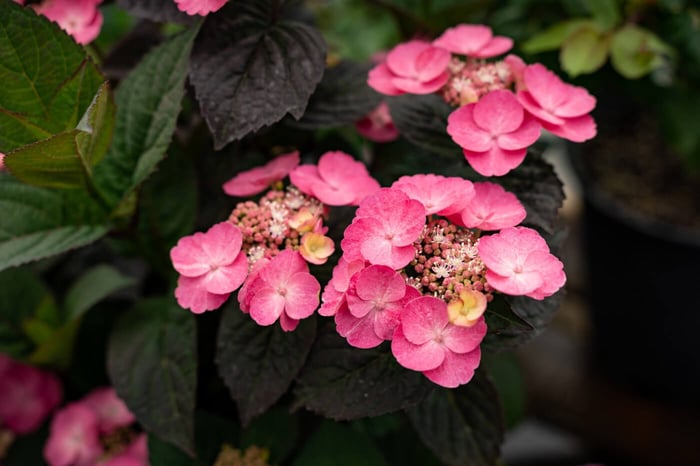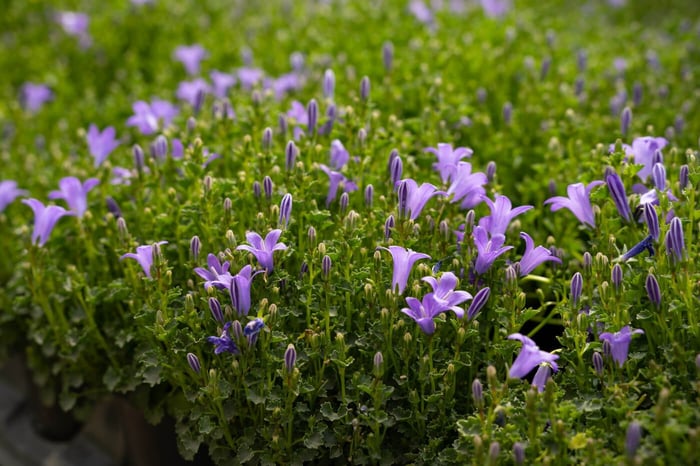Hydrangea serrata Pink Dynamo Mountain Hydrangea is a beautiful flowering plant that has captured the hearts of many gardening enthusiasts. This mountain hydrangea is a fairly recent introduction that has quickly become popular due to its impressive blooms, compact size, and ease of care. It has a rounded growth habit with stiff stems that support the blooms nicely.
This stunning variety of hydrangea produces beautiful pink flowers that bloom from mid-spring through late summer. It will grow up to 3 feet tall and wide, making it an ideal plant for both small and large gardens. The ovate foliage color ranges from green to almost black, creating a bold contrast against the bright light pink flowers.
The Pink Dynamo Mountain Hydrangea produces both sterile and fertile flowers on the same plant. The sterile flowers are the larger, showy blooms that we all love, while the smaller, less conspicuous, fertile flowers are responsible for producing seeds that can be used to propagate the plant.
The Pink Dynamo Mountain Hydrangea's flowers are pink, with slight hints of blue and purple. They grow in clusters that can contain up to 50 flowers each. The blooms fade to shades of pink and then brown as the season progresses, adding interest to the garden.
The Pink Dynamo Mountain Hydrangea is easy to grow and requires minimal maintenance. It thrives in well-drained, moist soil that is rich in organic matter. It prefers partial shade, but can tolerate full sun as long as it is well-watered. It’s a hardy plant that is resistant to pests and diseases.
To achieve optimal blooms, it is recommended that you prune the plant in late winter or early spring, before new growth appears. Remove any damaged or weak stems and trim back the previous year's growth to two or three healthy buds.







